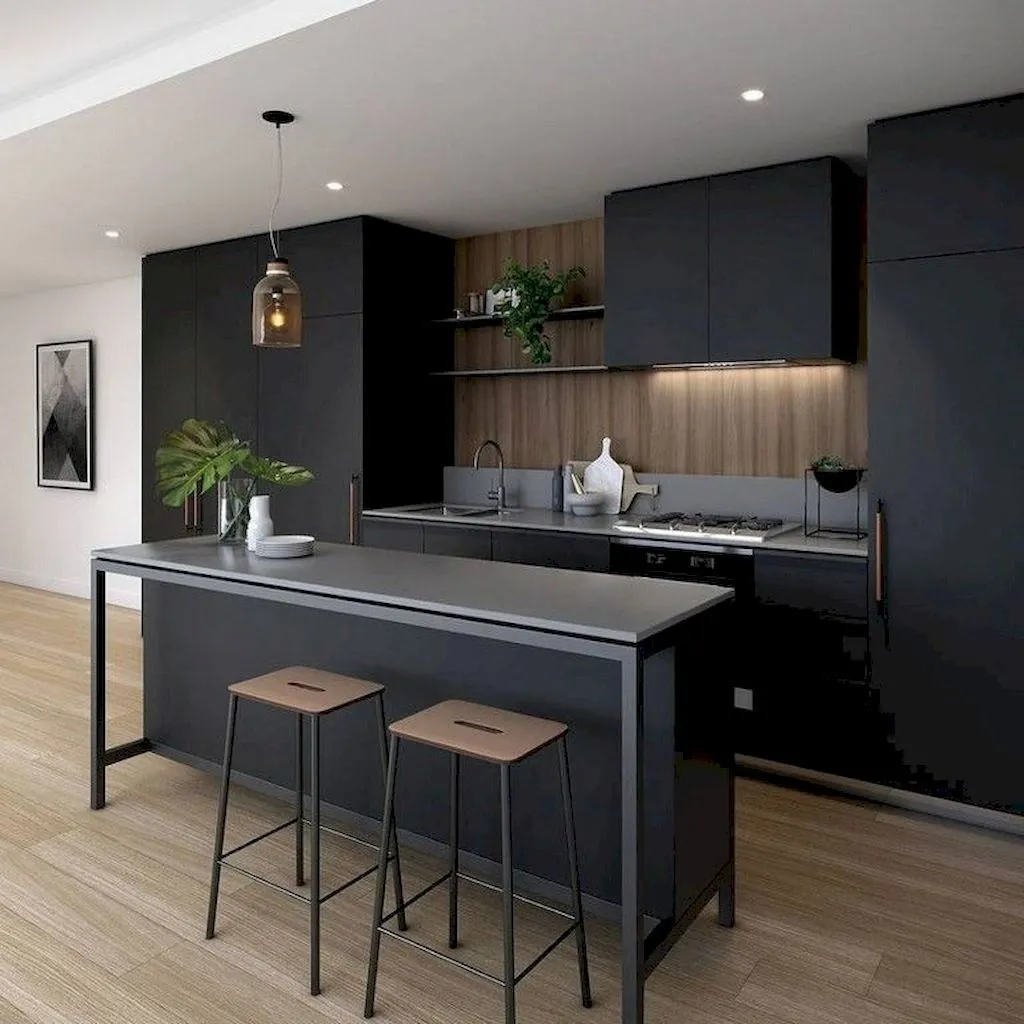Embracing Minimalism in Kitchen Decor
Minimalist kitchen decor is more than just a trend it’s a philosophy. It’s about creating a space that is both functional and beautiful, while eliminating unnecessary clutter. This design approach focuses on the essentials, creating a serene and efficient environment. Embracing minimalism in your kitchen is a journey towards a more organized, calm, and enjoyable cooking and living space. It allows you to focus on what truly matters: the food, the company, and the experience of creating and sharing meals. By simplifying your surroundings, you can enhance your daily life, making it less stressful and more fulfilling. The goal is to achieve a space that is both aesthetically pleasing and practical, reflecting a sense of peace and order.
The Core Principles of Minimalist Design
The core of minimalist design is centered around simplicity, functionality, and a “less is more” approach. It emphasizes clean lines, open spaces, and the use of high-quality materials. The aim is to strip away unnecessary elements, leaving only what is essential. This principle ensures that every item in your kitchen has a purpose and contributes to the overall aesthetic. It values the use of natural light, which enhances the feeling of space and airiness. A minimalist kitchen is characterized by its uncluttered surfaces and thoughtful organization. Every element is chosen with intention, contributing to an environment that promotes calmness and efficiency. The minimalist approach also encourages a focus on quality over quantity, ensuring that the items you do have are durable and well-designed.
Functionality and Simplicity
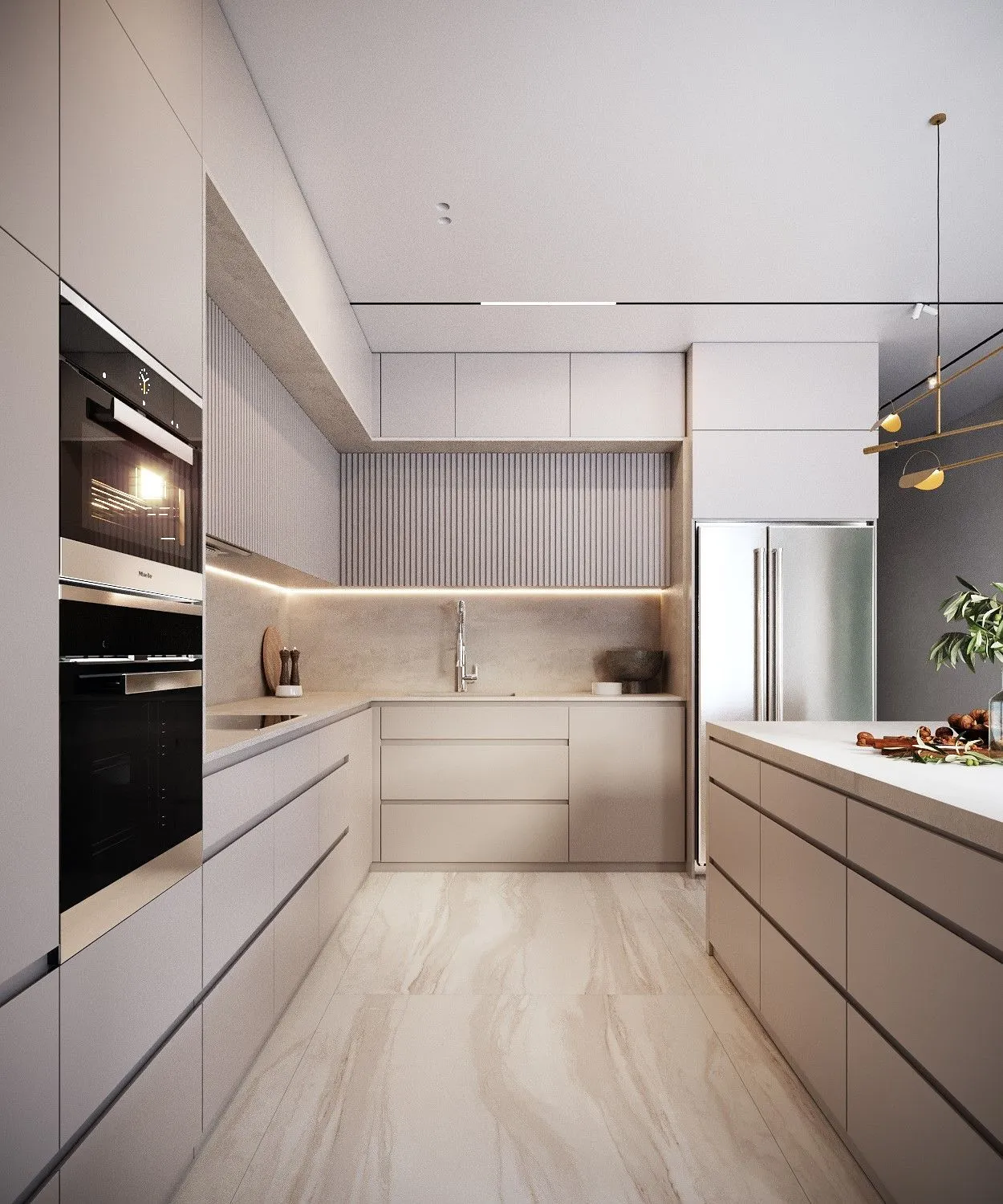
Functionality and simplicity go hand in hand in a minimalist kitchen. Design should prioritize efficiency, with every item having its place and purpose. This approach often involves smart storage solutions, such as pull-out drawers, hidden cabinets, and vertical shelving to maximize space and keep clutter out of sight. Clean lines and uncluttered surfaces make the kitchen easy to clean and maintain. Simple, intuitive layouts ensure that everything you need is within easy reach. The kitchen becomes a well-organized workspace, designed for efficiency and ease of use. This functional design reduces the time spent on mundane tasks, leaving more time for preparing and enjoying meals. The focus on simplicity minimizes distractions, allowing you to fully focus on the culinary experience.
Top 7 Minimalist Kitchen Decor Ideas
Decluttering and Organizing
The first step towards a minimalist kitchen is thorough decluttering. Remove anything you don’t use, need, or love. This process involves going through your cabinets, drawers, and countertops, and evaluating each item. Donate, sell, or discard anything that doesn’t serve a purpose. Organize what remains, using containers, dividers, and shelving to create designated spaces for everything. Keep frequently used items easily accessible and store less-used items out of sight. The goal is to minimize visual clutter, making the kitchen feel more spacious and organized. Regularly review your belongings to ensure you are not accumulating unnecessary items. This constant process of decluttering and organizing maintains the minimalist aesthetic and promotes a sense of calm in your kitchen.
The Importance of Storage Solutions
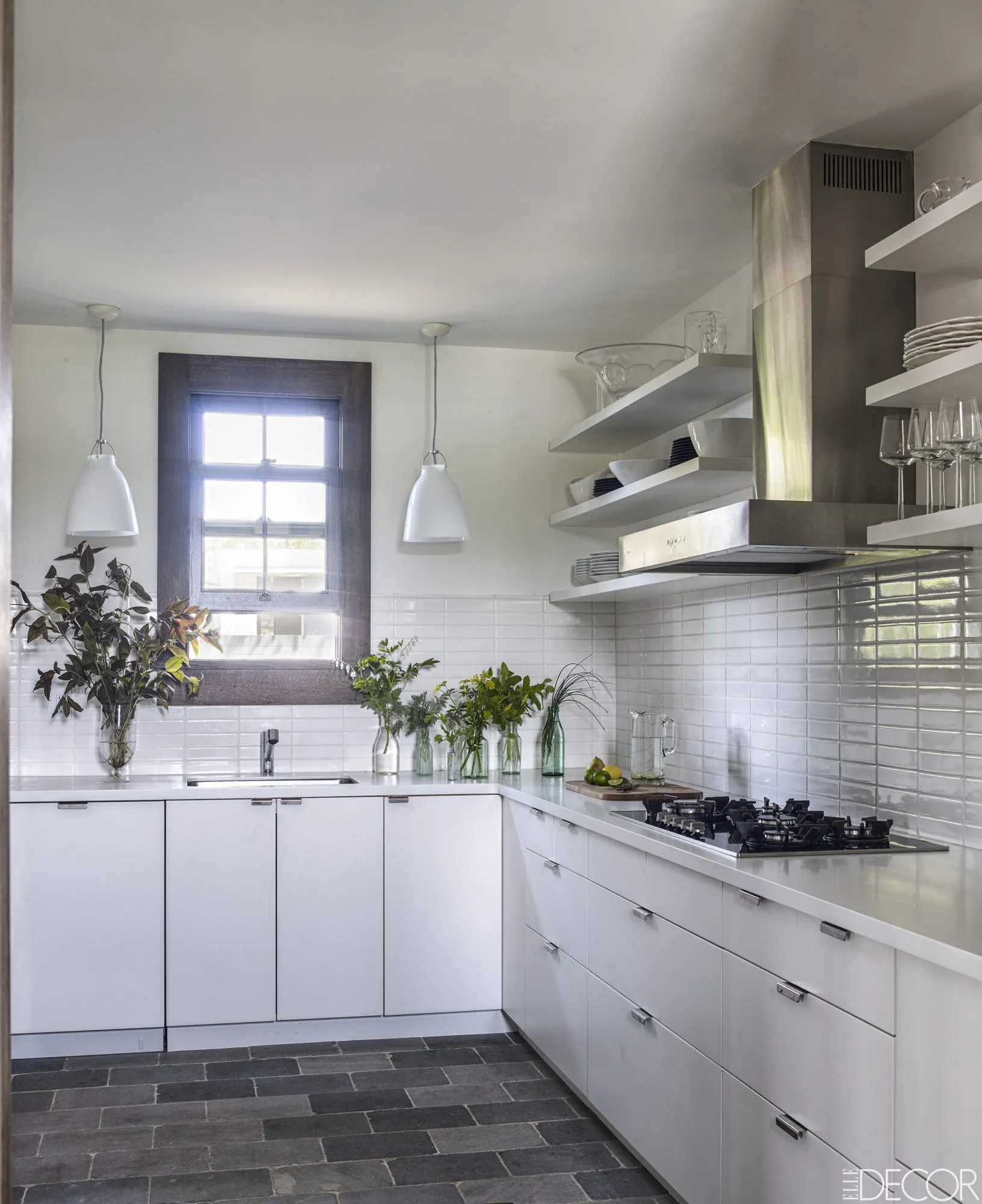
Effective storage solutions are essential for a minimalist kitchen. Consider implementing built-in cabinetry with ample storage space. Utilize pull-out drawers and shelves to make the most of every inch. Install organizers for utensils, spices, and other small items to keep them tidy and accessible. Hidden storage solutions, such as cabinets behind panels or integrated into appliances, can help to maintain a clean look. Vertical storage, like tall pantry units, maximizes space and allows you to store more items in a compact area. Keep countertops clear by storing appliances like toasters and blenders when not in use. Well-planned storage solutions are critical to maintaining the uncluttered environment central to minimalist design, ensuring that every item has its place.
Maximizing Counter Space
Counter space is a precious commodity in any kitchen, and even more so in a minimalist one. Keep your countertops as clear as possible by storing small appliances in cabinets or drawers when not in use. Choose appliances that are both functional and visually appealing, so they can be left out without detracting from the overall aesthetic. Use a minimalist approach to accessories, such as a simple soap dispenser and a few essential utensils. Consider installing floating shelves to provide additional storage without taking up valuable counter space. Regularly wipe down countertops to maintain a clean and uncluttered appearance. The goal is to create a workspace that is both functional and visually appealing, allowing you to move freely and enjoy the cooking process.
Neutral Color Palettes
Neutral color palettes are a cornerstone of minimalist design. They create a sense of calm and spaciousness. Think whites, grays, beiges, and light wood tones. These colors reflect light, making the kitchen feel brighter and more open. Use a consistent color scheme throughout the kitchen to create a cohesive look. Avoid overly bright or busy colors, as they can detract from the minimalist aesthetic. Introduce pops of color with accessories, such as plants or artwork, but keep these accents to a minimum. Neutral colors provide a versatile backdrop for various design elements, allowing you to easily update the look of your kitchen with small changes. This color scheme creates a tranquil environment conducive to relaxation and cooking.
The Power of White and Light Colors
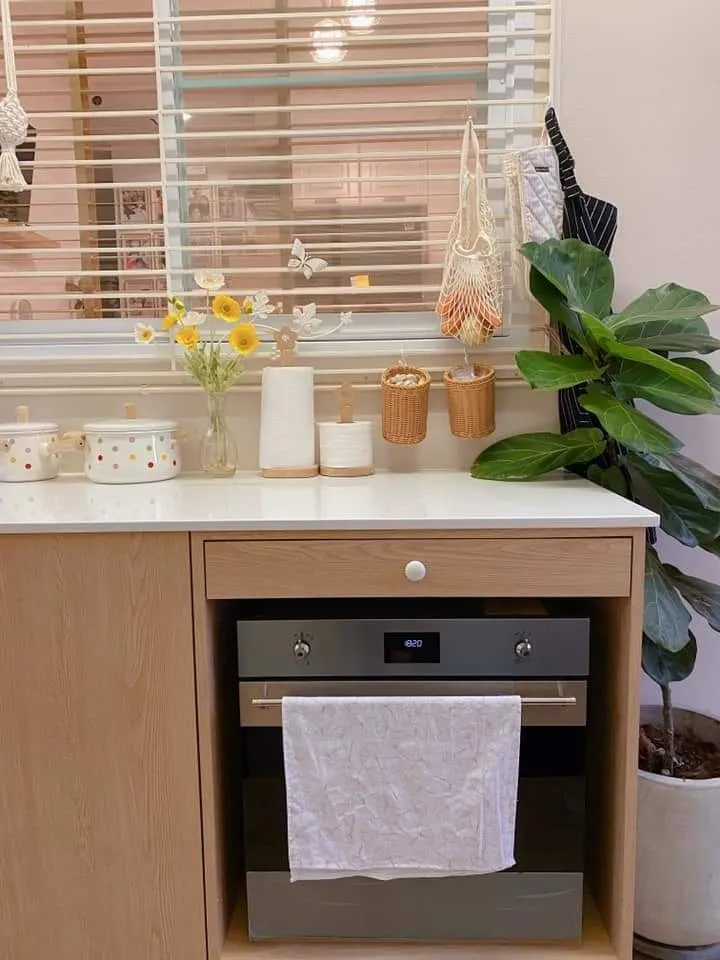
White and light colors are particularly effective in creating a minimalist kitchen. White walls, cabinets, and countertops reflect light, making the space appear larger and airier. Light-colored flooring, such as light wood or pale tile, can also contribute to this effect. These colors provide a clean, fresh look and serve as a versatile backdrop for other design elements. They create a sense of serenity and order, which is essential to the minimalist philosophy. The use of white and light colors also allows you to incorporate natural light to enhance the space. By keeping the color scheme simple, you can ensure that the focus remains on functionality and the quality of the design.
Incorporating Natural Materials
The use of natural materials brings warmth and texture to a minimalist kitchen. Wood, stone, and other organic elements can soften the starkness often associated with minimalist design. These materials also add a touch of luxury and sophistication. Choose materials that are durable, sustainable, and visually appealing. They will bring a sense of nature into the kitchen, creating a more inviting and comfortable space. Natural materials age beautifully, adding character and charm over time. They provide a balance to the clean lines and uncluttered surfaces, enhancing the overall aesthetic. Focus on the textures of the natural materials to provide visual interest in the space.
Wood and Stone Elements
Wood and stone are ideal choices for incorporating natural materials into your minimalist kitchen. Use wood for cabinetry, flooring, or countertops to add warmth and texture. Opt for light-colored or unfinished wood to maintain the minimalist aesthetic. Incorporate stone, such as marble or granite, for countertops or backsplashes to add a touch of luxury. Stone provides visual interest and a sense of solidity. These materials are also durable and can withstand the rigors of a busy kitchen. They provide a tactile experience and add a sense of character to the space. The use of wood and stone creates a harmonious balance between functionality and beauty.
Streamlined Appliances
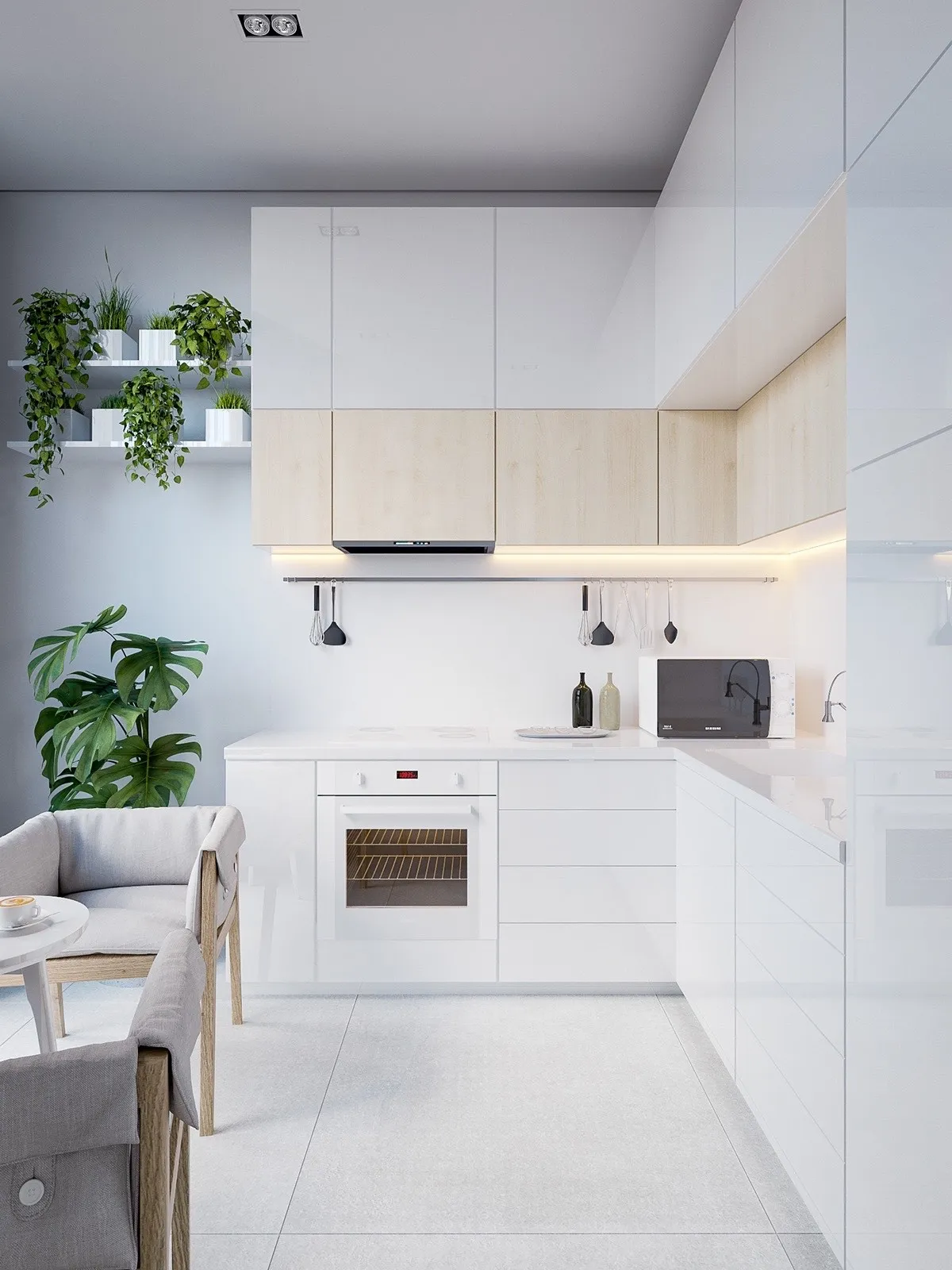
Choosing streamlined appliances is essential for maintaining a minimalist aesthetic. Look for appliances with clean lines and minimal detailing. Built-in appliances are ideal, as they can be seamlessly integrated into the cabinetry, creating a cohesive look. Stainless steel appliances are a popular choice, as they complement a variety of color schemes. Choose appliances that are energy-efficient and functional. Avoid appliances with excessive features or ornamentation. The goal is to create a kitchen that is both efficient and visually appealing, with appliances that blend seamlessly into the design. The selection of streamlined appliances contributes to the overall sense of order and simplicity.
Built-in vs. Standalone
Built-in appliances are the epitome of minimalist design, as they create a seamless and uncluttered look. They are integrated into the cabinetry, hiding the bulk and allowing the kitchen to appear more spacious. If built-in appliances aren’t feasible, opt for standalone appliances with a clean design and minimal features. Choose appliances that match the overall color scheme of your kitchen to maintain a cohesive look. Consider appliances with integrated handles or recessed features to further reduce visual clutter. The choice between built-in and standalone appliances depends on your budget and the layout of your kitchen. The key is to choose appliances that complement the minimalist aesthetic, whether they are built-in or standalone.
Minimalist Lighting Design
Lighting plays a crucial role in a minimalist kitchen. It enhances the space and sets the mood. Opt for simple, elegant lighting fixtures with clean lines and minimal detailing. Recessed lighting is a great choice, as it provides ample illumination without taking up visual space. Pendant lights above the island or dining area can add a touch of style, but keep the design understated. Use dimmers to control the intensity of the light, allowing you to create different moods. Consider incorporating natural light by maximizing window space. The goal is to create a well-lit kitchen that is both functional and visually appealing. The right lighting can enhance the minimalist aesthetic.
Task and Ambient Lighting
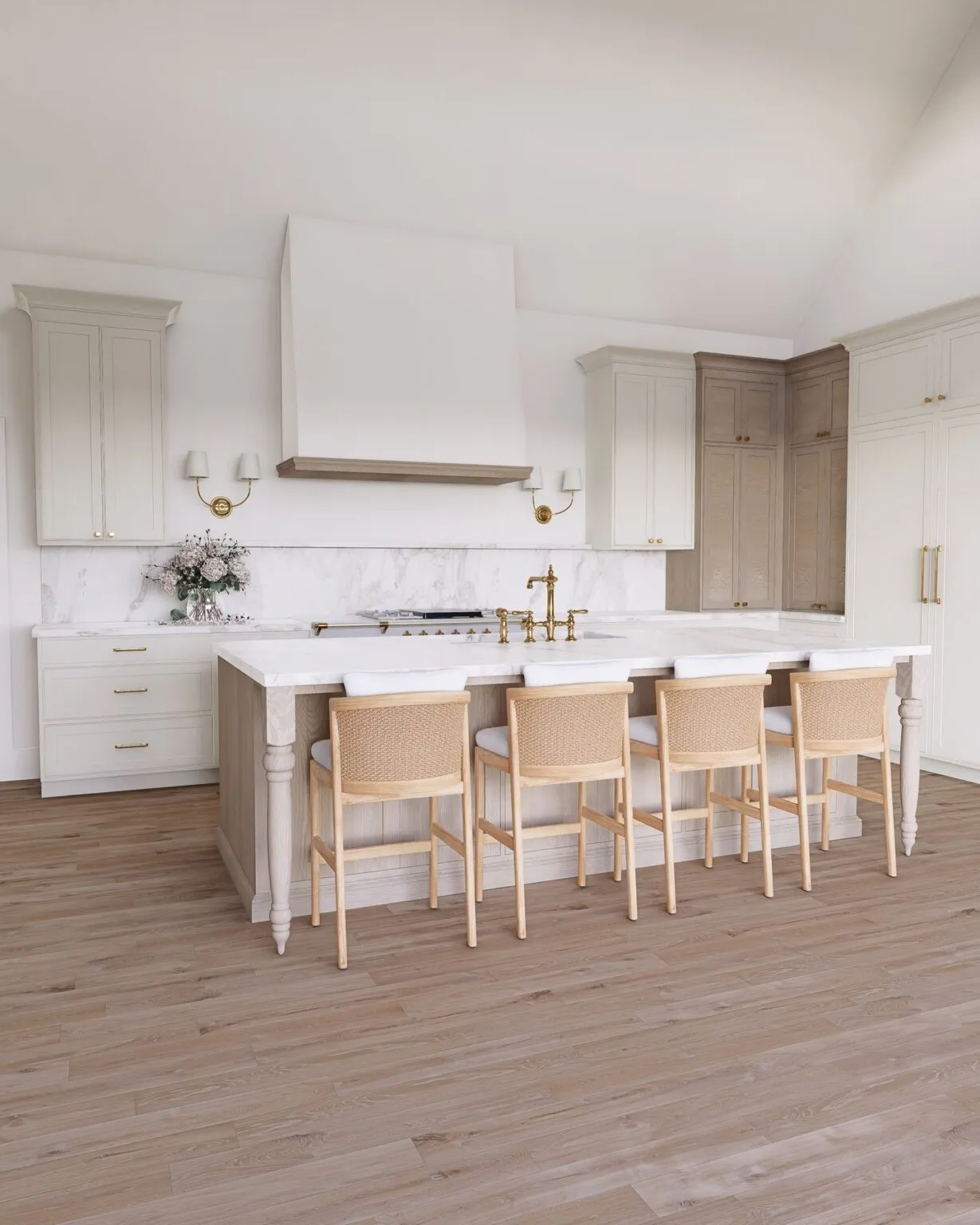
In a minimalist kitchen, it’s essential to combine task and ambient lighting to create a functional and welcoming space. Task lighting, such as under-cabinet lights, should be used to illuminate work surfaces. Ambient lighting, such as recessed lights or pendant lights, provides general illumination. Use a combination of both types of lighting to ensure that the kitchen is well-lit and efficient. Consider adding accent lighting to highlight specific features, such as artwork or architectural details. The strategic use of lighting can enhance the minimalist aesthetic and make your kitchen more enjoyable to use. Good lighting can also help create an inviting atmosphere.
Accessorizing Sparingly
In a minimalist kitchen, less is always more when it comes to accessorizing. Choose a few essential items that are both functional and beautiful. A simple soap dispenser, a few essential utensils, and a small plant can add personality without cluttering the space. Avoid displaying too many items on countertops or open shelves. Focus on quality over quantity, selecting items that you love and use regularly. The goal is to create a kitchen that is uncluttered and visually appealing. Carefully chosen accessories enhance the minimalist aesthetic without overwhelming the space. Remember that every item should have a purpose.
Choosing Essential Decor Pieces
When accessorizing a minimalist kitchen, choose items that are both functional and visually appealing. A simple vase with fresh flowers, a few cookbooks, or a piece of artwork can add personality. Opt for items that complement the overall color scheme of your kitchen. Choose high-quality materials and designs that will stand the test of time. Avoid trendy items that may quickly go out of style. The essential decor pieces should add a touch of personality without cluttering the space. Remember that every item should serve a purpose and contribute to the minimalist aesthetic. Focus on the pieces that you truly love and use regularly.
Plants in a Minimalist Kitchen
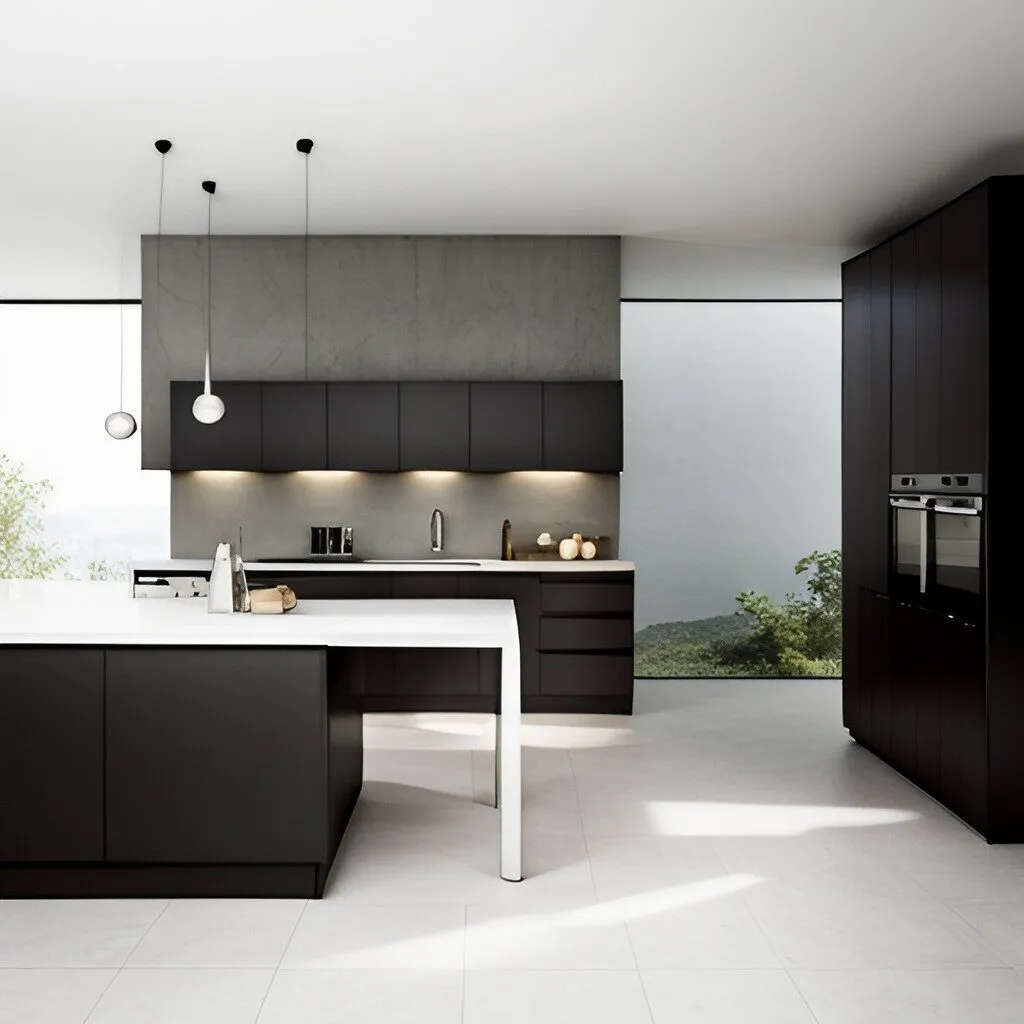
Plants bring life and freshness to a minimalist kitchen. They add color and texture, softening the starkness of the design. Choose plants that are easy to care for and thrive in a kitchen environment, such as herbs, succulents, or snake plants. Place plants strategically, such as on countertops, windowsills, or open shelves. Use simple, understated planters that complement the overall aesthetic. Avoid overcrowding the space with too many plants. The goal is to add a touch of nature to the kitchen without disrupting the minimalist design. Plants create a sense of calm and well-being, and they can purify the air.
Maintaining a Minimalist Kitchen
Maintaining a minimalist kitchen requires ongoing effort, but it is well worth it. It requires a commitment to decluttering and organizing. Regular cleaning and maintenance are essential to keep the kitchen looking its best. This creates a space that is both beautiful and functional. By adhering to the principles of minimalism, you can enjoy a kitchen that is peaceful, efficient, and a joy to use. The long-term benefits of a minimalist kitchen are improved mental well-being, reduced stress, and a greater appreciation for the essential things in life. Maintaining a minimalist kitchen is about making choices that enhance your life.
Regular Decluttering and Cleaning
Regular decluttering is crucial for maintaining a minimalist kitchen. Make it a habit to review your belongings regularly. Donate, sell, or discard anything you no longer use or need. Wipe down surfaces daily to prevent clutter from accumulating. Clean appliances, cabinets, and drawers on a regular basis. Deep clean the kitchen periodically to remove any buildup of dirt or grime. By staying on top of these tasks, you can keep your kitchen looking its best. This regular maintenance helps to maintain the minimalist aesthetic and create a sense of order.
Avoiding Clutter Buildup
Avoiding clutter buildup is essential for maintaining a minimalist kitchen. Be mindful of new purchases, and consider whether you truly need an item before bringing it into your home. Avoid accumulating unnecessary gadgets or appliances. Resist the urge to collect items that are not essential. Implement systems to prevent clutter from accumulating. This may include designated storage spaces for mail, paperwork, and other items. Make it a habit to put things away immediately after use. By being proactive and disciplined, you can maintain a clutter-free kitchen that is both functional and aesthetically pleasing. This effort will help you enjoy the benefits of a minimalist lifestyle.
